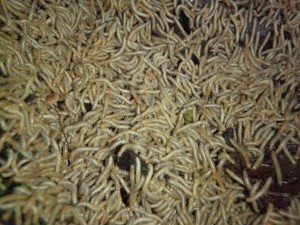October 17, 2011
While trekking in the Annapurna region of Nepal on vacation, we saw some curious invertebrates. Here are their portraits.
If anybody knows (a) what the millepedes are up to and/or (b) whether that snail engulfing its own shell is normal, please comment! You can click on the small images to download high-res versions.




The millipedes were seen in rhododendron forest between the villages of Ghandruk and Tadapani, at an elevation somewhere between about 1,940 meters and 2,590 meters (about 6,300 feet to 8,500 feet–it’s a big range, I know…) on September 30, 2011, in overcast weather. They weren’t very active, just hanging around in these dense clusters.
And the snail was seen between Tolka and Chhomrong at an elevation probably a little lower than 1,800 meters (5,900 feet) on September 28.
Photo credits: millipedes1 is by Scott Eney, the other three are by me.




